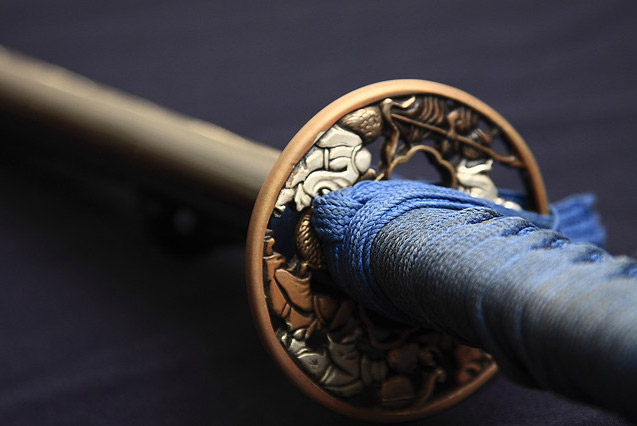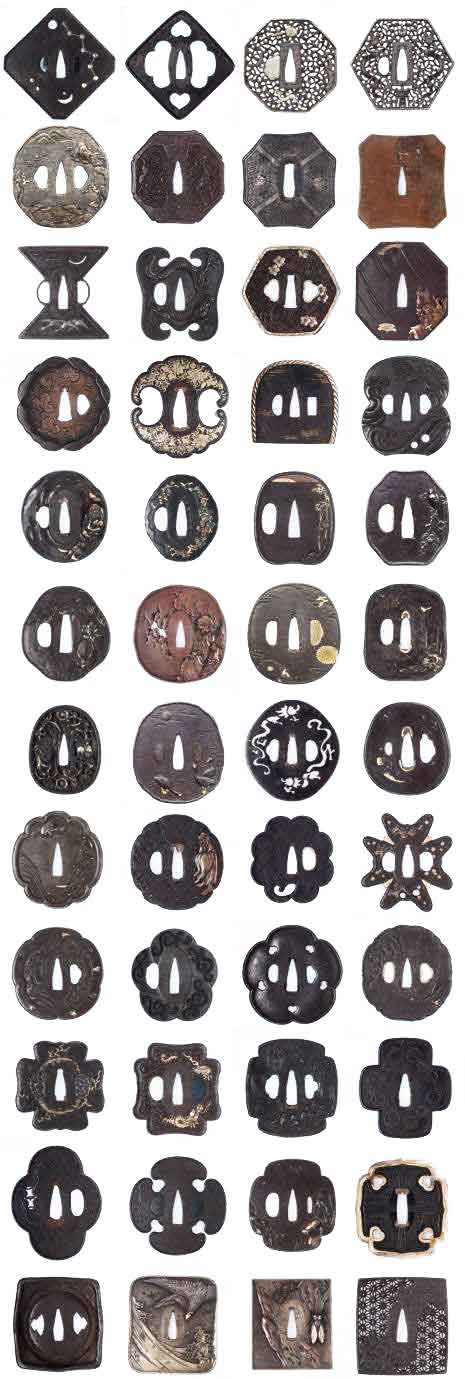- Katana 1€ to 79€
- Katana ONE PIECE
- Katana 80€ to 199€
- Katana 200€ to 599€
- Katana over 600 €
- Katana Custom
- Iaito - 模擬刀
- Wakizashi
- Tanto
- [+] Parts katana
- [+] Katana Accessory
- Engraving katana
- [+] Ninja
- [+] Chinese weapon
- [+] Wooden weapons
- [+] Knife
- [+] Outfits
- [+] House and Objects
- Médiéval Sword
- Military saber
- Home
- Profile
- Services
- Help
- Log in
- **Cart**
- What a difference in a katana and an Iaito
- The different types of steel
- How to choose your katana
- Accessories and maintenance of Iaito and katana
- Little katana dictionary
- What disciplines to practice with a katana or an iaito
- Musashi Miyamoto the greatest samurai Japan has ever known
- The laikidoka sword: the bokken
- Kendo, the legacy of the samurai
- The making of a katana
- The Habaki of the katana
- The Kanjis
- Budo
- The Saya of the katana
- Kyudo
- The Yumi
- The Hamon of the katana
- The Tsuba of the Katana
- How to measure a katana or an iaito
- The Sageo of the katana
- The history of the Japanese sword - 1
- The history of the Japanese sword - 2
- Custom katanas and iaitos
- Chanoyu, the Japanese tea ceremony
- The Iaido
- The boshin war or the last samurai
- The best incense from Japan
- Renovation of Japanese swords
- Ninja
- FAQ
- Terms and conditions
- Site map
- Contact
- Useful links
- Private life
- Clubs & Communities
The Tsuba of the Katana

Tsuba are the guards of Japanese swords (katanas, wakizashi, tantos). Their goal is to prevent the opponent's blade from slipping on the saber and cutting off the hand.
Tsubas are made from a wide variety of metals including iron, copper (red) and its derivatives such as yellow copper, bronze, shibuichi, shakudô, rogin but also gold and / or silver.
Each tsuba has a size (5 to 10 cm), a slice and a particular shape. It is however possible to identify ten different shapes: round (Marugata), "square" with rounded angles (Kaku gata, Yuko Ito gata), quadrilobate (Moko gata, Tate Ito gata), rectangular (Aori gata). .
The first tsubas date back to the 6th century. Much simpler in shape (in the shape of a drop of water) they were generally made of an alloy of copper or iron. Before that date some tsubas had to be imported. It is still possible today to find craftsmen specializing in the manufacture of tsubas.
It is possible to classify the tsubas according to their "style" allowing to identify the belonging to a school, a period and / or a particular factor. Some tsubas being signed it becomes "easy" to retrace the history or rather that of the postman.
Peculiarity of a tsuba
There are several peculiarities of the tsuba, each one having a specific function:
The Nagako-Ana:
The largest and most important gap visible on the tsuba, more or less triangular in shape, it is used to pass the blade of the saber.
The Kozuka-Hitsu:
Hole in which we slide a Kogatana, which was a replica of the katana blade but on a small scale, indeed Kogatana means "ko" short "gatana" which is a phonetic variant of katana, it was used by everyone the current uses of the samurai, the noblest of all being to cut the quill pen that will allow the samurai to write his last poem before his ritual suicide: the seppuku.
The Kogai-Hitsu:
Hole for storing the Kogai, a pair of points with many uses: knives, chopsticks, hairpins, scraper for cleaning horses' hooves or even a tool for armor.
Tsubas are made from a wide variety of metals including iron, copper (red) and its derivatives such as yellow copper, bronze, shibuichi, shakudô, rogin but also gold and / or silver.
Each tsuba has a size (5 to 10 cm), a slice and a particular shape. It is however possible to identify ten different shapes: round (Marugata), "square" with rounded angles (Kaku gata, Yuko Ito gata), quadrilobate (Moko gata, Tate Ito gata), rectangular (Aori gata). .
The first tsubas date back to the 6th century. Much simpler in shape (in the shape of a drop of water) they were generally made of an alloy of copper or iron. Before that date some tsubas had to be imported. It is still possible today to find craftsmen specializing in the manufacture of tsubas.
It is possible to classify the tsubas according to their "style" allowing to identify the belonging to a school, a period and / or a particular factor. Some tsubas being signed it becomes "easy" to retrace the history or rather that of the postman.
Peculiarity of a tsuba
There are several peculiarities of the tsuba, each one having a specific function:
The Nagako-Ana:
The largest and most important gap visible on the tsuba, more or less triangular in shape, it is used to pass the blade of the saber.
The Kozuka-Hitsu:
Hole in which we slide a Kogatana, which was a replica of the katana blade but on a small scale, indeed Kogatana means "ko" short "gatana" which is a phonetic variant of katana, it was used by everyone the current uses of the samurai, the noblest of all being to cut the quill pen that will allow the samurai to write his last poem before his ritual suicide: the seppuku.
The Kogai-Hitsu:
Hole for storing the Kogai, a pair of points with many uses: knives, chopsticks, hairpins, scraper for cleaning horses' hooves or even a tool for armor.


The different forms of tsubas
It is possible to cite among the most famous schools in particular those of:
Asakusa: from the province of Asakusa during the Edo period;
Chôshû, Ônin, Tachikanagoshi, Tôcho: 16th century schools, respectively characterized by (i) its iron tsubas (ii) its applied relief decorations (iii) the use of soft metal with inlays (iv) iron tsuba cut out for parade sabers;
Gomoku-zôgan, Kaneie (fushimi), Shingen, Shôami: end of the 16th century;
Gotô: school founded by Gotô Yujô (1453-1512) characterized by a background made up of raised points;
Heian-jô, Hôan, Kaga, Sukashi: early 17th century. The last school mentioned being "specialized" in cut iron tsubas;
Higo: founded in the same province by Hayashi Matashichi;
Jajushi kisaemon from the city of Nagasaki and whose tsuba have a Chinese touch like the tsubas from the Sôten school;
Kamakura from the city of Kamakura whose iron tsubas are influenced by Chinese art, carved and lacquered;
KinaÏ: in cut iron; Ko-Kinko in soft metal and loaded decorations; Myochin: school created in the 17th century using wrought iron; Ôtuki (Tôkyô), Tanaka: 19th century schools ...
Each school has its own personality with its famous factors (Shimuzu Jingô, Kanô Matsuo ...) and its own production techniques. The classification exposed above is absolutely not exhaustive we could quote the school of Kamayama which began under the Muromachi period characterized for its iron tsubas close to another style, that of Owari.
Asakusa: from the province of Asakusa during the Edo period;
Chôshû, Ônin, Tachikanagoshi, Tôcho: 16th century schools, respectively characterized by (i) its iron tsubas (ii) its applied relief decorations (iii) the use of soft metal with inlays (iv) iron tsuba cut out for parade sabers;
Gomoku-zôgan, Kaneie (fushimi), Shingen, Shôami: end of the 16th century;
Gotô: school founded by Gotô Yujô (1453-1512) characterized by a background made up of raised points;
Heian-jô, Hôan, Kaga, Sukashi: early 17th century. The last school mentioned being "specialized" in cut iron tsubas;
Higo: founded in the same province by Hayashi Matashichi;
Jajushi kisaemon from the city of Nagasaki and whose tsuba have a Chinese touch like the tsubas from the Sôten school;
Kamakura from the city of Kamakura whose iron tsubas are influenced by Chinese art, carved and lacquered;
KinaÏ: in cut iron; Ko-Kinko in soft metal and loaded decorations; Myochin: school created in the 17th century using wrought iron; Ôtuki (Tôkyô), Tanaka: 19th century schools ...
Each school has its own personality with its famous factors (Shimuzu Jingô, Kanô Matsuo ...) and its own production techniques. The classification exposed above is absolutely not exhaustive we could quote the school of Kamayama which began under the Muromachi period characterized for its iron tsubas close to another style, that of Owari.
The main forms
- Maru-gata: round section.
- Tate-maru-gata: oval or teardrop plan.
- Mokko-gata: quadrilobed border.
- Kiku-gata: form of chrysanthemum.
- Hashi-gaku: hexagonal.
- Nade-kaku-gata: rectangular line with rounded edges.
- Kaku-mimi: square.
- Kaku-mimi-koniku: yet square with rounded angles.
- Maru-mimi: rounded.
- Namban-gata: all shapes, decoration in arabesques.
- Ho-o-gata: round or oval edge, phoenix decoration.
- Mukade-gata: circular perimeter, ray decoration.
- Shingen-gata: rounded line, concentric decoration.
- Naga-maru-gata: oval plan.
- Sukinokoshi: raised edge.
- Hamidashi: round with side notches.
- Dote-mimi: hollow tubular edge.
- Tate-maru-gata: oval or teardrop plan.
- Mokko-gata: quadrilobed border.
- Kiku-gata: form of chrysanthemum.
- Hashi-gaku: hexagonal.
- Nade-kaku-gata: rectangular line with rounded edges.
- Kaku-mimi: square.
- Kaku-mimi-koniku: yet square with rounded angles.
- Maru-mimi: rounded.
- Namban-gata: all shapes, decoration in arabesques.
- Ho-o-gata: round or oval edge, phoenix decoration.
- Mukade-gata: circular perimeter, ray decoration.
- Shingen-gata: rounded line, concentric decoration.
- Naga-maru-gata: oval plan.
- Sukinokoshi: raised edge.
- Hamidashi: round with side notches.
- Dote-mimi: hollow tubular edge.

True works of art

Never has the decorative genius of the Japanese been so brilliantly asserted as in the saber-guards, which are generally masterpieces of decorative composition and execution. Wearing the sword was a privilege that the samurai and daimios were proud of, so it is not surprising how carefully they decorated the guards with it.
Sources :
www.clickjapan.org
www.la-pierre-et-le-sabre-iaido18.fr
www.samourais-et-ikebana.com
www.clickjapan.org
www.la-pierre-et-le-sabre-iaido18.fr
www.samourais-et-ikebana.com
|
No comments
|




